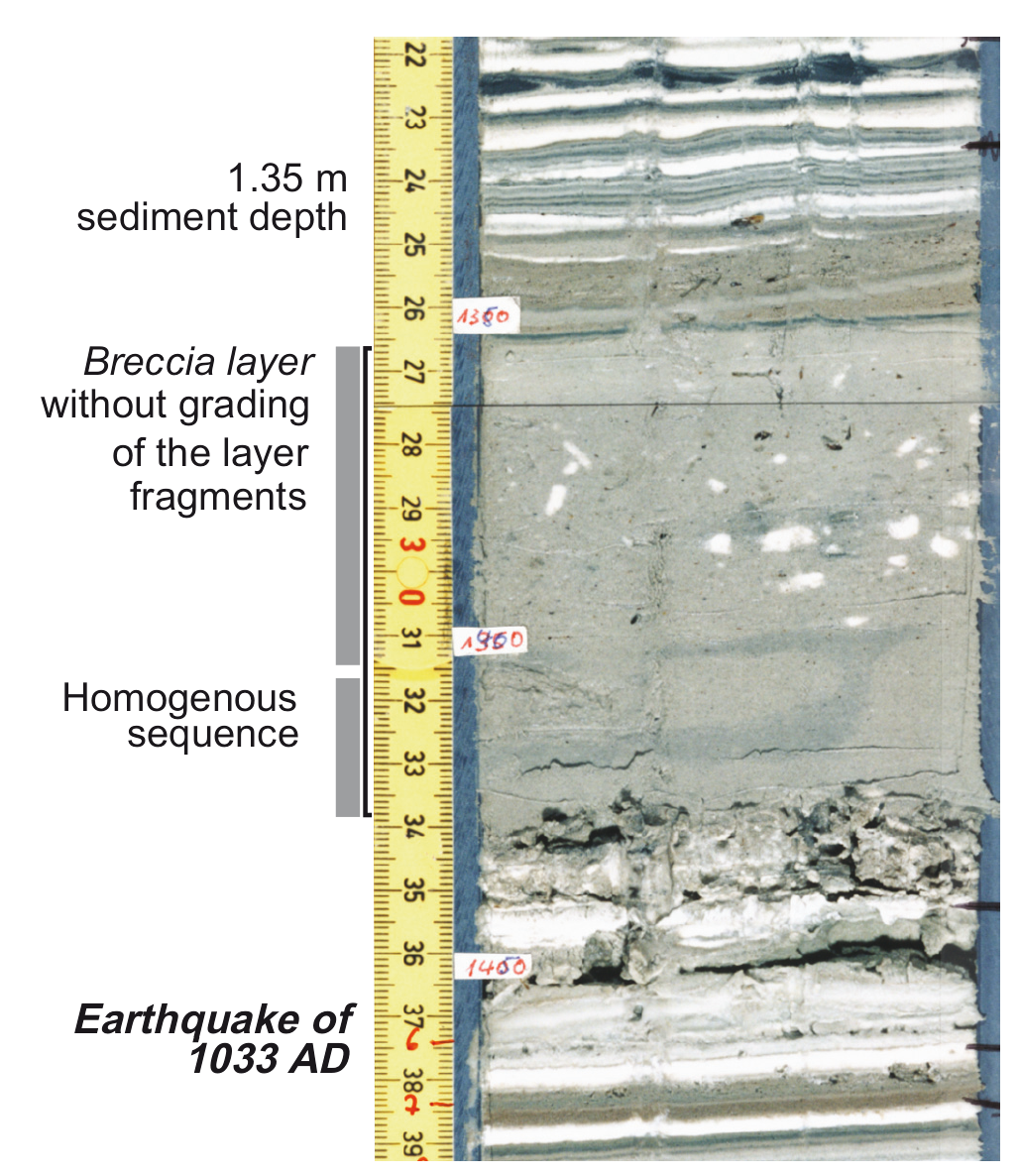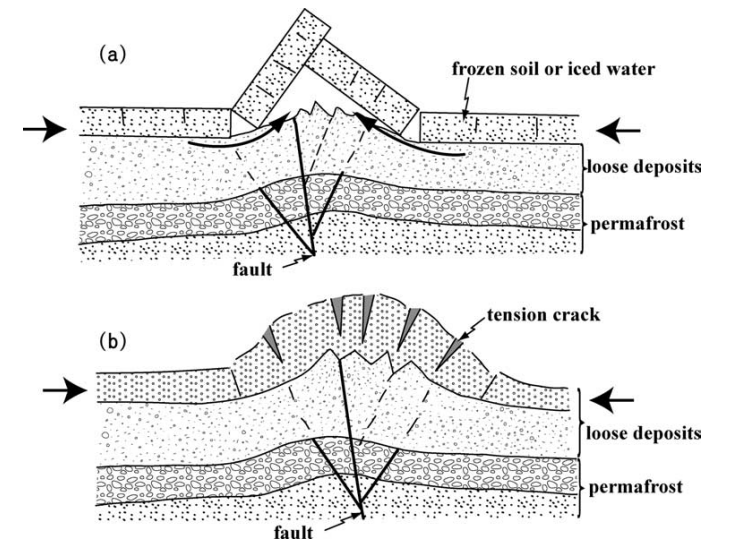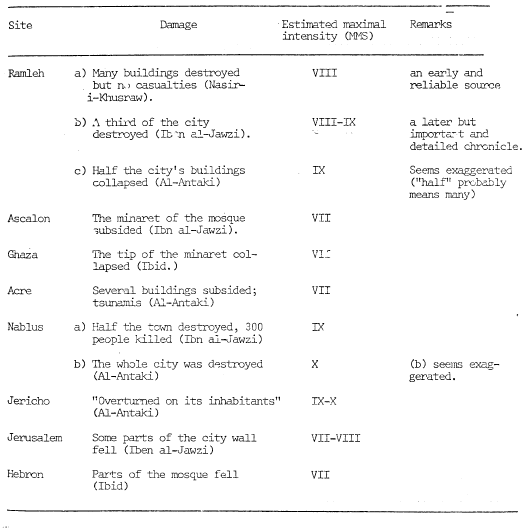Archaeoseismic Evidence
| Location (with hotlink) | Status | Intensity | Notes |
|---|---|---|---|
| Jerusalem - Introduction | n/a | n/a | n/a |
| Jerusalem's City Walls | possible | Weksler-Bdolah in Galor and Avni (2011:421-423) presented historical evidence and limited archaeological evidence which indicates that Jerusalem's city walls were reconstructed in the late 10th - early 11th century CE - possibly partly in response to seismic damage. | |
| Tiberias - Introduction | n/a | n/a | n/a |
| Tiberias - Mount Berineke | possible | Archaeoseismic Evidence from the church on top of Mount Berineke is undated ( Ferrario et al, 2014) | |
| Tiberias - Basilica | possible | ≥ 8 | End of Phase II earthquake - 11th century CE - Hirschfeld and Meir (2004) noted that Stratum I was
built above the collapse [of Stratum II] caused by an earthquake.Stratum I was dated to the 11th century CE while stratum II was dated to the 9th-10th centuries CE. |
| Tiberias - House of the Bronzes | possible | ≥ 8 | End of Stratum II Earthquake - 11th century CE - Hirschfeld and Gutfeld (2008:2) noted that
towards the end of the Fatimid period [in Stratum II] the residential structures were destroyed and the area was completely abandoned. Large piles of rubble covering the courtyards of the houses and their roomsand fissures in the walls of the water tower and other structuresled them to conclude that the destruction was caused by an earthquake. Stratum II was dated from the 10th - 11th centuries CE while overlying Stratum I was dated from the 12th-14th centuries CE. |
| Tiberias - Gane Hammat | possible | ≥ 8 | End of Phase IIb destruction layer - ~11th century CE -
Onn and Weksler-Bdolah (2016) wrote the following about the end of Phase IIb
All of the buildings were destroyed at the end of Phase IIb, probably by the strong earthquake that struck the region in 1033/4 [i.e., the 11th century CE Palestine Quakes]; both historical sources and the remains in other cities attest to this event. Following the earthquake, some of the buildings were left in ruins, but others were rebuilt. The buildings in Area A, for example, was never restored: the columns that had collapsed in the earthquake were discovered toppled on the floors of the courtyards belonging to the Phase IIb building. |
| Umm el-Qanatir | possible | ≥ 8 | 2nd Earthquake - undated - Wechsler et al (2008) report a collapse layer in a makeshift house that was built inside an abandoned synagogue that was likely seismically damaged from one of the Sabbatical Year Quakes (the Holy Desert Quake). The collapse layer from the makeshift house is not dated. |
| Kedesh | possible | ≥ 8 | The Roman Temple at Kedesh exhibits archaeoseismic effects and appears to have been abandoned in the 4th century CE; possibly due to the northern Cyril Quake of 363 CE. Archaeoseismic evidence at the site could be due to 363 CE and/or other earthquakes in the ensuing ~1600 years. See Fischer et al (1984) and Schweppe et al (2017) |
| Jericho - Introduction | n/a | n/a | n/a |
| Jericho - Hisham's Palace | probable | ≥ 8 9-10 |
Later Earthquake -
Alfonsi et al (2013) dated the causitive earthquake for the major seismic destruction at Hisham's Palace to the earthquake of 1033 CE unlike previous
researchers who dated it to one of the Sabbatical Year earthquakes. Their discussion is reproduced below:
The archaeological data testify to an uninterrupted occupancy from eighth century until 1000 A.D. of the Hisham palace (Whitcomb, 1988). Therefore, if earthquakes occurred in this time period, the effects should not have implied a total destruction with consequent occupancy contraction or abandonment. Toppled walls and columns in the central court cover debris containing 750-850 A.D. old ceramic shards (Whitcomb, 1988). Recently unearthed collapses north of the court confirm a widespread destruction after the eighth century (Jericho Mafjar Project - The Oriental Institute at the University of Chicago). These elements support the action of a destructive shaking event at the site later than the 749 A.D. earthquake. The two well-constrained, major historical earthquakes recognized in the southern Jordan Valley are the 749 and 1033 A.D. (Table 1; Marco et al (2003); Guidoboni and Comastri, 2005). We assign an IX—X intensity degree to the here-recorded Hisham damage, whereas a VII degree has been attributed to the 749 A.D. earthquake at the site (Marco et al, 2003). Furthermore, Whitcomb (1988) defines an increment of occupation of the palace between 900 and 1000 A.D. followed by a successive occupation in the 1200-1400 A.D. time span. On the basis of the above, and because no pottery remains are instead associated with the 1000-1200 A.D. period at Hisham palace (Whitcomb, 1988), we suggest a temporary, significant contraction or abandonment of the site as consequence of a severe destruction in the eleventh century. |
| Lod/Ramla | possible | ≥ 8 | Rosen-Ayalon (2006:72) suggested that renovations to the White Mosque at Ramla in the third building phase occurred after the structure was damaged in the earthquake of 1033 CE. |
| Mishmar David | possible | ≥ 8 | End of Stratum V Earthquake - 11th century CE - Yannai (2014) noted that an immense building in Stratum V of Area B
was damaged, possibly in another earthquake, either that of 1033 or of 1068 CE. Yannai (2014) noted that Stratum V buildings [in Sub-Area C1] were destroyed by a second earthquake, either the one that struck in 1033 or that of 1068 CE. |
| Ramat Rahel | possible | ≥ 8 | 10th-11th century CE collapse - In The Tel Aviv - Heidelberg Joint Project - The 2006 and 2007 seasons at Ramat Rahel
mention is made of a 10th-11th century collapse in Area D1
A massive stone collapse had covered the floors of the different architectural units. The many broken pottery vessels date the collapse of the building to the Abbasid period or to the beginning of the Fatimid period (10th–11th century CE) |
| Beit-Ras/Capitolias | possible | Later Earthquakes -
Al-Tawalbeh et. al. (2020:14) discussed archaeoseismic evidence for later post abandonment earthquakes
We believe that filling up the cavea and orchestra of the theater happened parallel with the construction of the enclosing wall that essentially put all of the remaining building underground. Underground facilities are significantly less vulnerable to seismic excitation than that above-ground buildings (Hashash et aL, 2001). Understandably, when each wall and arch are supported by embedding sediment (dump in Beit-Ras), the observed deformations of the excavated theater mostly cannot develop unless unsupported. Therefore, evidence of damage due to any subsequent events, such as A.D. 551, 634, 659, and 749, cannot be observed, because the possibility of collapse of buried structures is not plausible. However, potential collapse of other above-ground structures within the site of Beit-Ras cannot be ignored, such as the upper elements of the theater's structures, which were still exposed after the filling of the theater with debris. Several observations indicated that many collapsed elements of the upper parts of the theater were mixed with the debris, as documented in excavation reports by Al-Shami (2003, 2004). Another example suggesting the effect of the later events, such as that of A.D. 749. Mlynarczyk (2017) attributed the collapse of some sections of the city wall of Beit-Ras to this event, based on the concentration of collapsed ashlars and the age of collected pottery from two trenches excavated to the west of the theater structure.Al-Tawalbeh et. al. (2020:6) also noted the following about the eastern orchestra gate: The basalt masonry in the upper left suggests a later local collapse and repair phase, where the basalt courses are overlaying the marly-chalky limestone to the left of the walled arched eastern gate. |
|
| Petra - Introduction | n/a | n/a | n/a |
| Petra - Jabal Harun | possible | ≥ 8 | Phase 12 destruction event - not well dated -
Mikkola et al (2008) noted that in this destruction event all remaining roof structures collapsed and there was a layer of stone tumble. Hard-packed, clayey soil directly under the lowermost deposits of stone tumble [...] contained relatively few findsapparently making it difficult to date. Also found in the stone tumble were the remains of two fallen arches, a row of voussoirs, some drums fallen froma column, and many other architectural elements found throughout the complex. |
| Petra - Petra Church | possible | ≥ 8 | Fiema et al (2001) characterized structural destruction of the church in Phase X as likely caused by an
earthquake with a date that is not easy to determine. A very general terminus post quemof the early 7th century CE was provided. Destruction due to a second earthquake was identified in Phase XIIA which was dated from late Umayyad to early Ottoman. Taken together this suggests that the first earthquake struck in the 7th or 8th century CE and the second struck between the 8th and 16th or 17th century CE. |
| Petra - Blue Chapel and the Ridge Church | possible | Later undated earthquake(s)- Perry in Bikai et al (2020:70) noted that from the 8th c. A.D. on, the abandoned structures suffered extensive damage from repeated earthquakes. |
|
| Aqaba - Introduction | n/a | n/a | n/a |
| Aqaba - Aila | possible | ≥ 7 (I) ≥ 8 (II) |
Two possibilities - Earthquake I and Earthquake II Earthquake I - Thomas et al (2007) described Earthquake II as follows: The youngest earthquake (Earthquake I) recorded at this site ruptured faults very close to the modern ground surface. Earthquake II - Thomas et al (2007) described Earthquake II as follows: These deposits were ruptured and the buildings collapsed. |
| Shivta | possible | ≥ 8 | Post Abandonment Earthquake(s) - 8th - 15th centuries CE - On the western perimeter of Shivta in Building 121,
Erickson-Gini (2013) found evidence of earthquake induced collapse of the ceilings and parts of the wallswhich she dated to possibly in the Middle Islamic periodafter the site was abandoned at the end of the Early Islamic period.Collapsed arches were also found. The arches appear to be in a crescent pattern. Erickson-Gini (2013) discussed dating of the structure is as follows: The excavation revealed that the structure was built and occupied in the Late Byzantine period (fifth–seventh centuries CE) and continued to be occupied as late as the Early Islamic period (eighth century CE). The structure appears to have collapsed sometime after its abandonment, possibly in the Middle Islamic period.Dateable artifacts in Room 2 came from the Late Byzantine period and the Early Islamic period (eighth century CE). The terminus ante quem for this earthquake is not well established. Korjenkov and Mazor (1999a) report that a site effect is not likely at this location. |
| Reṣafa | possible | Al Khabour (2016) notes that
the Basilica of St. Sergius (Basilica A) suffered earthquake destructions but did not supply dates. The apse displays fractures that appear to be a result
of earthquakes or differential subsidence

 Fig. 2
Fig. 2Rusafa: the huge church containing the remains of St. Sergio. Al Khabour (2016) from the building of the church [Basilica A first built in the 5th century CE] up to the abandonment of the city in the 13th century, earthquakes and the building ground weakened by underground dolines [aka sinkholes] have caused considerable damage. |
|
| Palmyra | unlikely to possible | 11th century CE earthquake -
Kowalski (1994:59) suggests that the House rebuilt from the Praetorium on top of the Temple of Allat was destroyed by an earthquake
in the 11th century CE.
The house was abandoned, maybe just like most of that area in the ninth century (Gawlikowski 1992: 68). The main entrance was walled up. The house remained unoccupied until it was destroyed by an earthquake in 1042 AD (Ambraseys 1969-1971:95)20. The ruin was buried in the earth.Ambraseys (2009)'s entry for an earthquake in 1042 CE is as follows: AD 1042 TadmurGuidoboni and Comastri (2005)'s entry for this earthquake is very similar. |
|
| el-Lejjun | possible | ≥ 8 | 4th Earthquake - ~600 CE - 1918 CE - Groot et al (2006:183) report discovery of a
nearly complete Umayyad Lamp in Square 4 of Area B (Barracks - B.6.038) in the Post Stratum Gap - above and later than the 3rd earthquake layer.
Above the Ummayyad lamp was a 0.7 m thick layer of tumble containing some roof beams and many wall blocks(Groot et al, 2006:183). They note that the basalt roof beams found embedded in the lowest tumble level (B.6.032) suggests initial massive destruction rather than gradual decay over time. The wall blocks, found in the upper layer of tumble, contained one late Islamic (1174-1918 CE) and one Ayyubid/Mamluk (1174-1516 CE) sherd indicating a significant amount of time may have passed between the possibly seismically induced roof collapse and the wall collapse which was not characterized as necessarily having a seismic origin. This opens up the possibility that one of the mid 8th century CE earthquakes or a later earthquake may have also caused damage at el-Lejjun. deVries et al (2006:196) suggests that Umayyad abandonment of the northwest tower was probably triggered by further major collapse. In the North Gate, deVries et al (2006:207) found evidence of full scale destruction in layers above 3rd earthquake debris and post-earthquake occupation layerswhich contained Late Byzantine/Umayyad and Umayyad sherds. Subsoil/tumble was found in C.9.008 (north room), C.9.009 (south room) and C.9.005 (stairwell) bear ample witness to the destruction of the rooms, perhaps in the Umayyad period. Although Late Byzantine sherds were found in Post Stratum layers in the North Gate, if one assumes that the 3rd earthquake was the Inscription at Aeropolis Quake which struck before 597 CE - probably within a decade of 597 CE, one can establish an approximate and fairly conservative terminus post quem for this earthquake of ~600 CE. While the terminus ante quem is the end of the post stratum III gap (1918 CE), it is probable that that the earthquake struck much earlier. |
| Castellum of Qasr Bshir | possible | ≥ 8 | Later Earthquake(s) - Above what was presumed to be a Late Umayyad collapse layer
Clark (1987:490) found another collapse layer in H.2
A period of abandonment followed [the Late Umayyad collapse], punctuated by a squatter occupation of the room, during which a fire was lit in the corner. There followed a major collapse of masonry, after which no further occupation of the room took place. |
| Location (with hotlink) | Status | Intensity | Notes |



